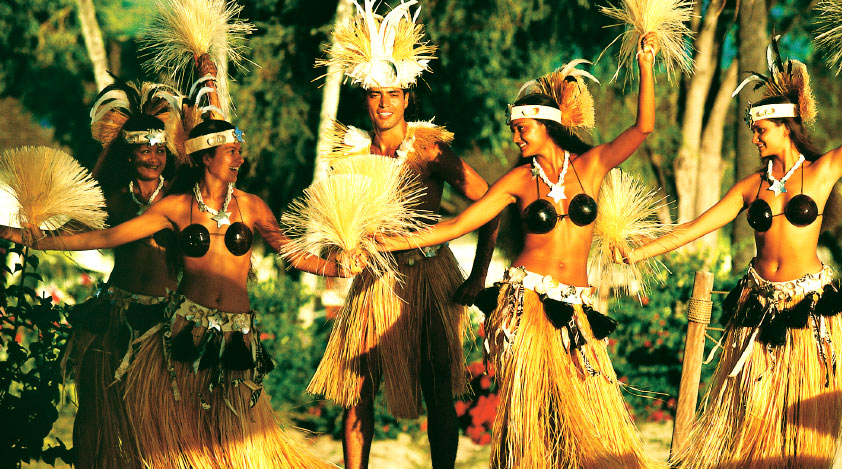Posted by on 01 Nov 2019
, in Islands
Tahitian dance, originating from the islands of Tahiti, has been known for its bouncy moves and fast speed. The steps are associated with certain events and occasions and usually illustrate the daily life and sea life scenes of Tahitians. During ancient times, Tahitians would dance for joy, to greet guests, to pray to a god, to challenge an enemy, or to seduce a mate. Here are the basic dance steps of a Tahitian dance called "Tamure."
Tamure
1 – Most of the time, dancers would bend their knees a lot keeping their shoulders still
2 – Sway your hips in circle movements, from left to the back then right and front continuously. This is called the “Ami”
3 – Tairi Tamau. Bend knees and STILL shoulders. Push your right knee back causing your right hip to softly jut out to the right. Now the left knee causing your left hip to jut out to the left. Alternate left, right, left, right smooth not sharp.
4 – Tairi Tama. Almost similar with Tairi Tamau but with sharp movements and faster pace. Snap your right and then left knee back making your hips to snap left to right. Keep your shoulders still and knees bent. Then, drop your body low.
5 – Varu or the figure “8” movements. Slow and smooth push your right hip out to the front and around to the right then back right into the left hip moving forward around to the left and back then right again in a continuous figure 8 with hips.
6 – Otamu or the “box” movements. Snap your hip to the front right, back right, then left back and left front. Think yourself as of you are standing in a box. Your hips should hit each corner one at a time.
7 - Fa'arapu, which is the most important but difficult step. This is the very fast impressive move you gawk at when you watch a Luau. Everyone has a naturally more comfortable direction that their hips naturally like to move in. Begin AGAIN by bending your knees and keeping your shoulders very still. Push hips out in a smooth Ami, then go faster and faster and faster. Try the other direction. Find which direction you naturally shake, try counter clockwise and vice versa. Make sure your circle is consistent all the way around and you're not jutting your bottom out or favouring one side.
Music
Tahitian dances are usually accompanied by traditional musical instruments such as drums made of shark skin and hollowed-out tree limbs, conch shells, and nasal flutes. Also note the common terms used:
- Tamau – also means “to tie” or sway left to right
- Afata – box
- Toma – double bup
- te`I – on toes
- Standard feet position – “v”
- fa`arapu – fast circles
- ope – advanced movement, putting one left out and pushing them to do other side.
- Varu – figure “8”


